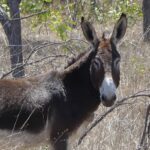African elephants (Loxodonta africana) require approximately 40 to 60 gallons (150 to 220 liters) of water daily to maintain their health. They obtain this water from various sources, including open water bodies and wells dug in sandy riverbeds. Additionally, elephants also get water from vegetation. This can be the inner trunks of Baobab trees or the bark of Marula trees. Like Zebras, elephants consistently seek out and drink the cleanest available water regardless of the water source.
Surface water
When encountering large water bodies such as rivers or lakes, elephants use these sources for multiple purposes. They drink and use the water to regulate their body temperature by cooling themselves. Additionally, they apply mud to their skin as a protective measure against insects and parasites.
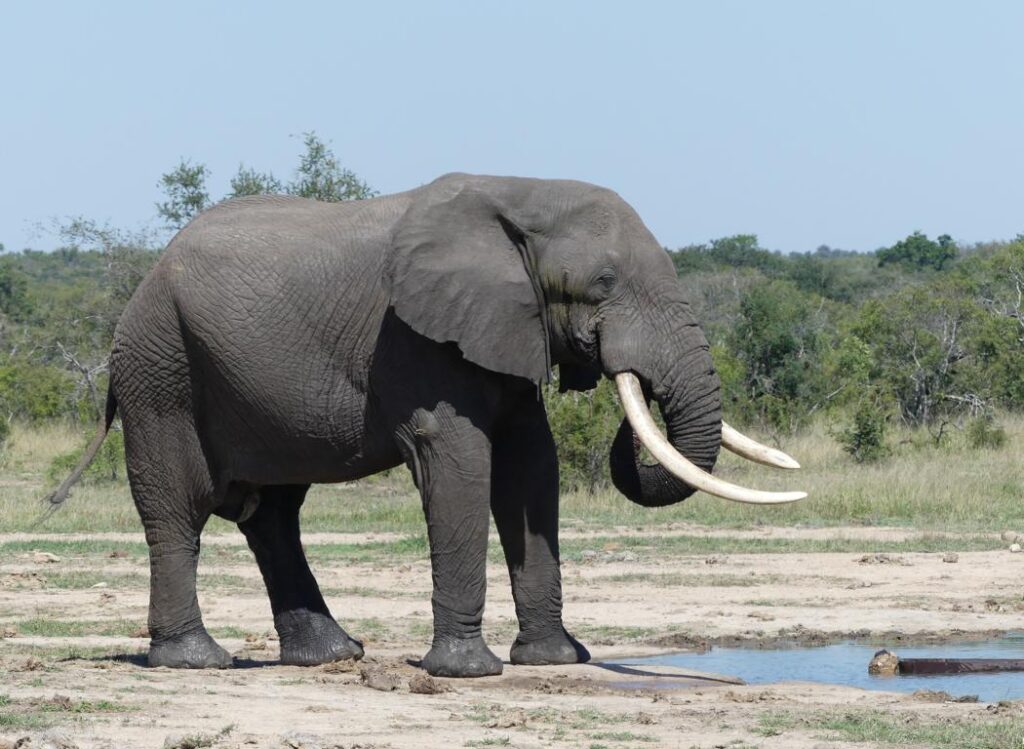
Elephants rely on this water source in smaller water bodies, consistently prioritizing the cleanest available option. If boreholes fill up these water ponds, the water at the place where it enters is notably cleaner. Should other animal species already claim these specific points, elephants will drive them off. Subsequently, the most dominant member within the herd or group will occupy that location.
This source has proven that elephants’ deciding factor in choosing their water source is not a variance in salinity between borehole water and surface water in small ponds. Instead, the water’s cleanliness is primary in determining which water source they drink.
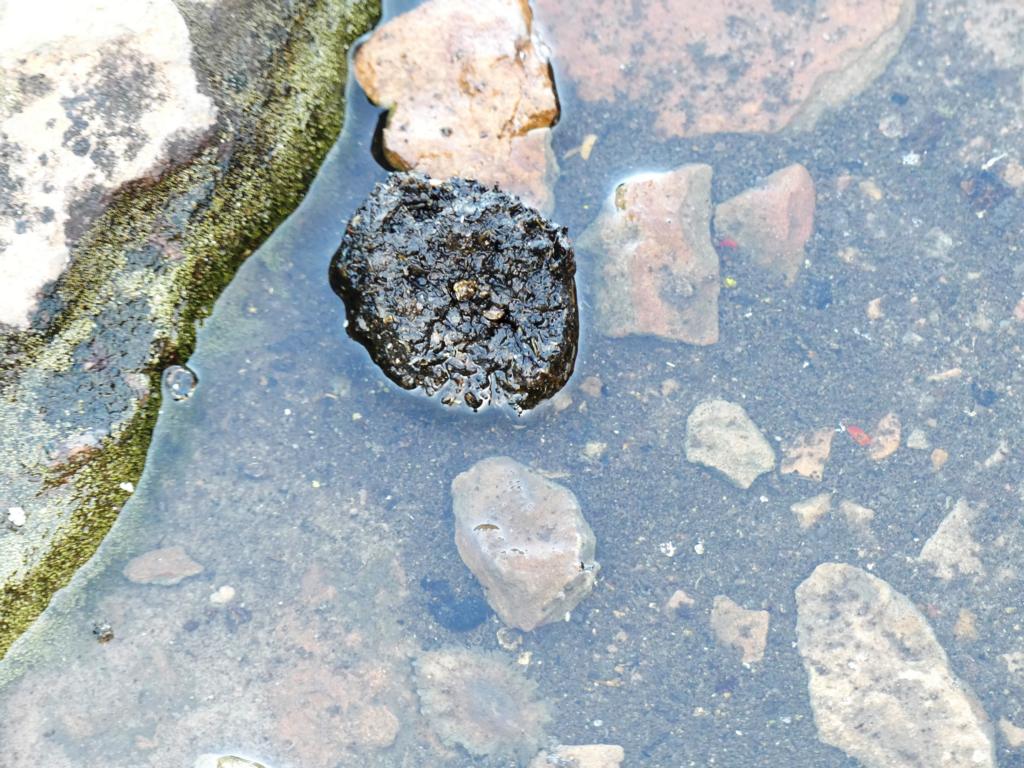
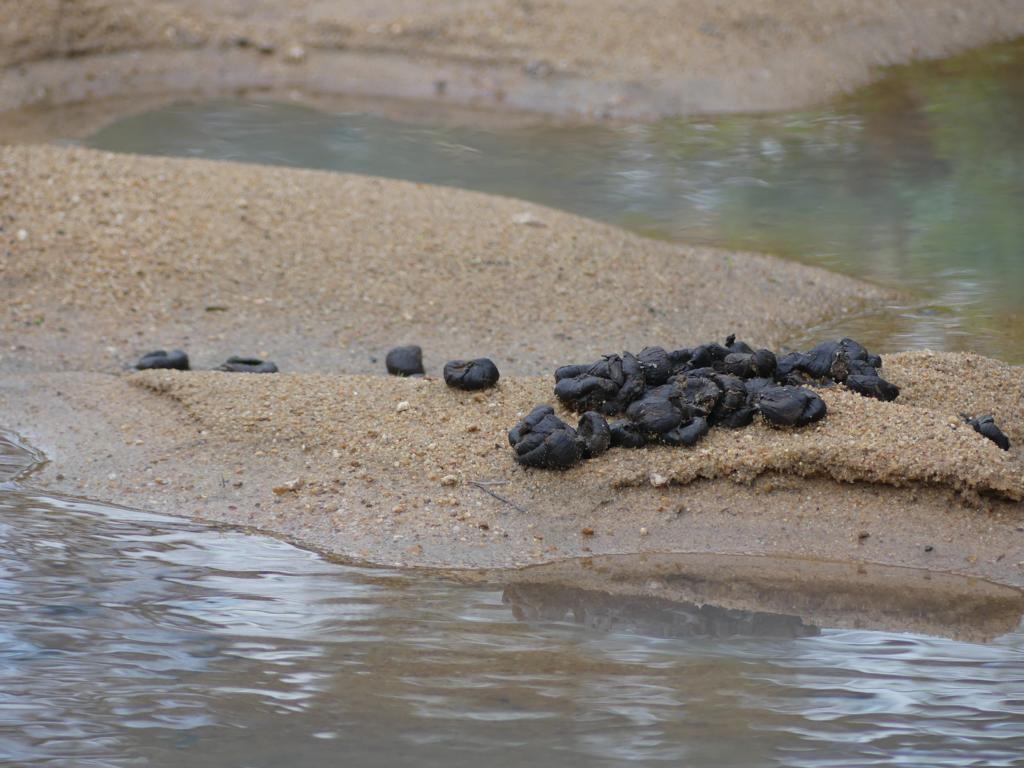
Small-sized open water sources are often heavily loaded with high fecal coliform bacterial counts, like Escherichia coli bacteria. These bacteria originate from animal droppings, nearly always found around ponds and puddles. Chacma baboons have the nasty trait of intentionally pooing into such puddles to keep other animals off ‘their’ water.
Elephants digging their own wells
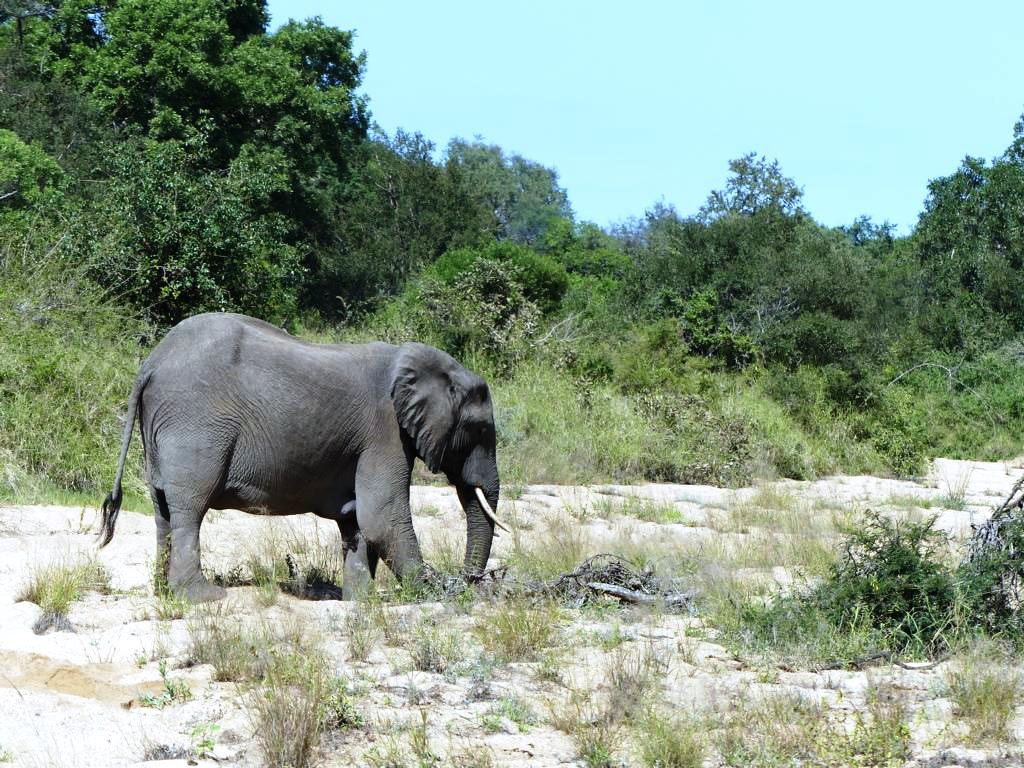
Hence, elephants frequently excavate their fresh wells near these polluted water sources. This behavior is an attempt to leverage the natural filtering properties of sand for water purification. The study also revealed a significant disparity in the fecal coliform bacterial counts between the water sourced from such wells and adjacent surface water. This indicates that through the filtration process, fewer carriers (small particles) are present for bacteria to attach to. Consequently, this mechanical filtering mechanism also yields an unintended yet beneficial biological outcome.
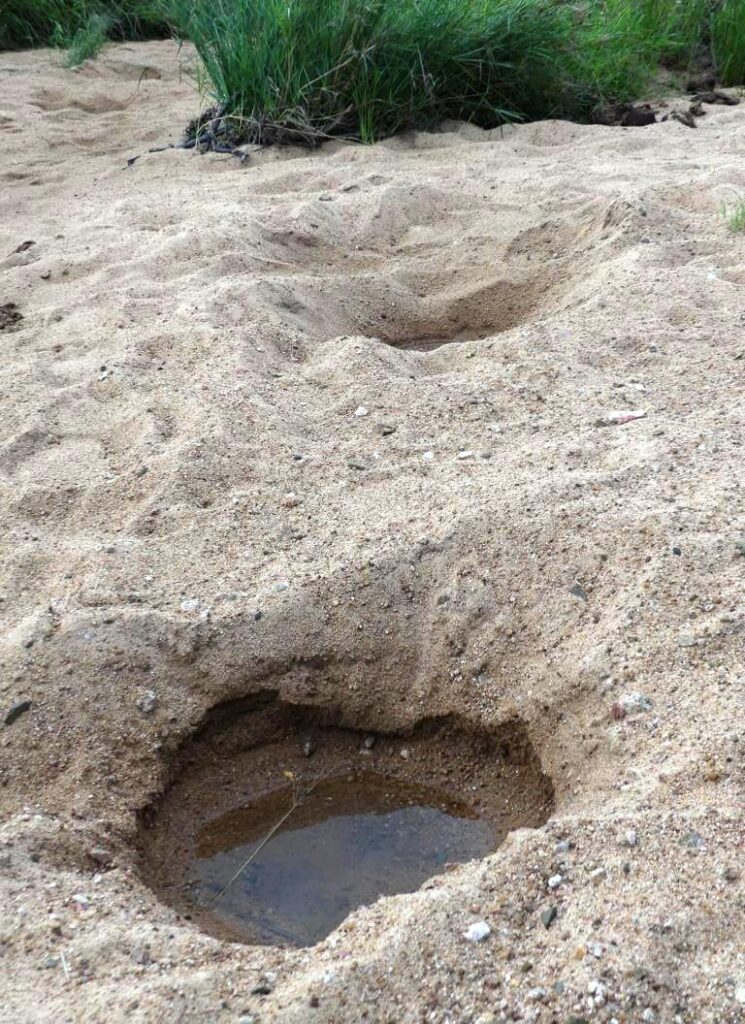
Elephants prefer excavating wells in areas with pure sand. In cases where loamy or organic layers are interspersed among the sand strata, they frequently abandon the digging process.
For humans in search of water, it is advisable to focus on areas where elephants have dug in dry riverbeds. Whether to utilize an existing well or dig a separate one depends on the cleanliness of the pits.
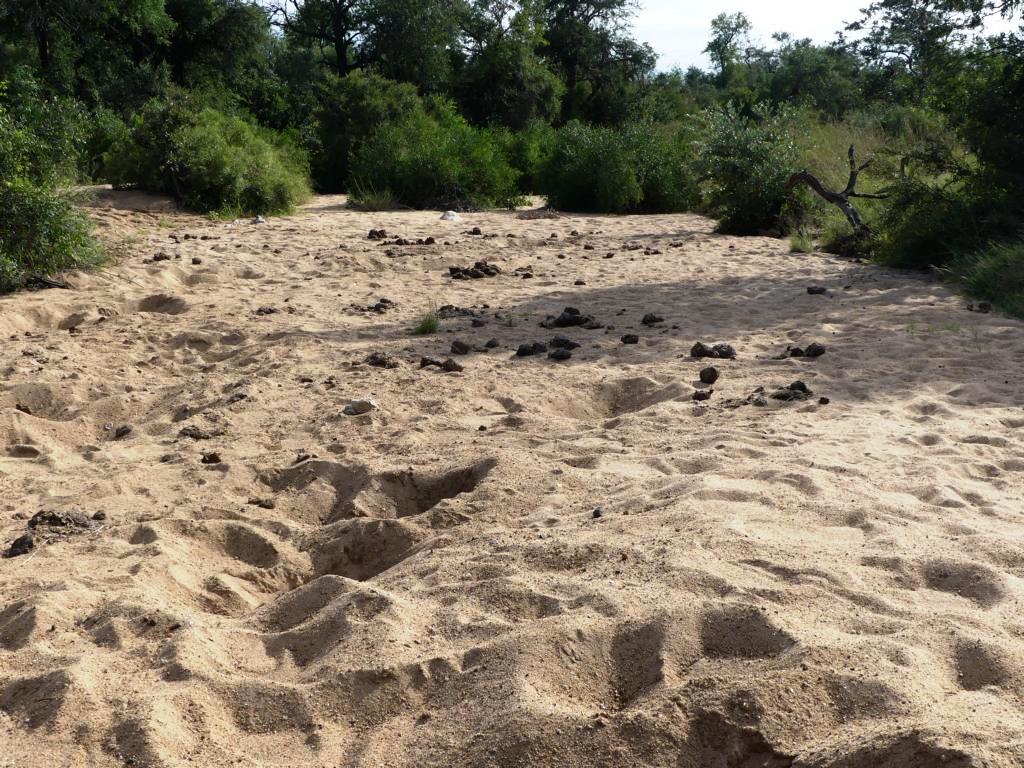
Consequently, where elephants excavate water pits, humans will also find clean water that can be easily excavated. Another article on this website described how to dig water in a dry riverbed.
Water from vegetation
Another water source for elephants is parts of vegetation. Frequently, elephants create hollows within Baobab (Adansonia digitata) trunks to access the spongy and moist interior.
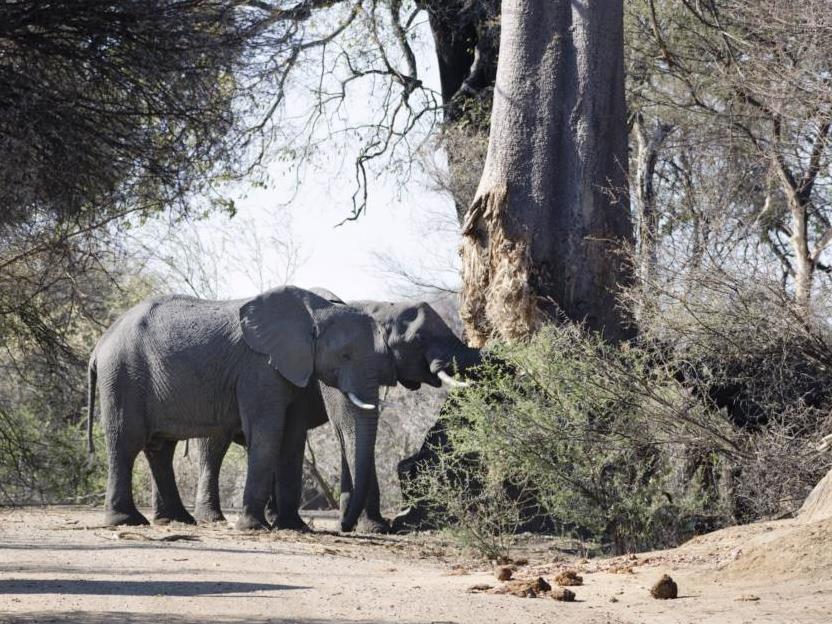
Simultaneously, however, members of the same breeding herd may indulge in wallowing activities in a nearby river or feed on expansive papyrus reeds nearby.

This implies that consuming moist and spongy Baobab wood is not primarily driven by water scarcity but could also have other reasons. Baobab leaves, fruit pulp, seeds, and bark are known for their medicinal properties. See here. Although not published yet in open-access research papers, the inner trunk wood could also contain such medicinal properties. And often, elder female elephants demonstrate this behavior to their matured daughters, perpetuating this learned trait.
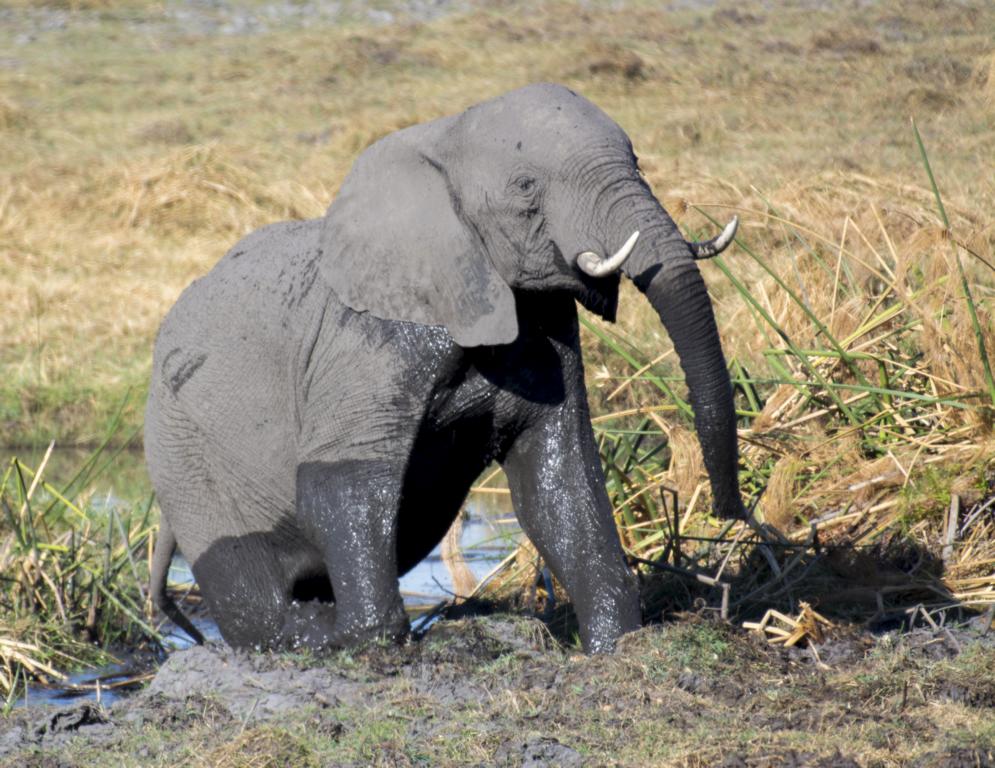
Also, the thick and moist bark of Marula (Sclerocarya birrea) trees holds a significant allure for elephants. Phloem and xylem under the outer bark of Marula trees contain antihistamine properties, which humans use as a treatment for hairy caterpillars- and other stings. Notably, Marula is one of the few tree species capable of surviving after being ring-barked. Additionally, while Marula roots contain abundant water, elephants typically avoid digging them up. Nevertheless, in times of emergency, humans could potentially extract these roots to utilize as a source of water.
Lessons learned from elephants digging wells for water in sandy riverbeds:
- Elephants consistently endeavor to reach clean water sources.
- Elephants excavate holes in nearby sand when water pools or puddles become contaminated.
- Despite only undergoing mechanical filtration within the sand, this water exhibits considerably lower bacterial levels than the water in the open source.
- Consequently, freshly dug elephant pits in sandy riverbeds are a reliable indication for discovering suitable drinking water.
.





